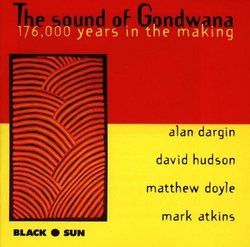Album DescriptionTo the amazement of the world, on September 24, 1996, the history of humanity and the Australian Aborigines were rocked; changed fundamentally, forever. The Sydney Morning Herald reported "a team of scientists...had found a rock art site in the Northern Territory known by local Aborigines as Jinmium, that was at least 76,000 years old." and that "They also found evidence, in sediments below the art, that humans had first occupied the continent between 116,000 and 176,000 years ago."When you listen to this recording you are making contact with the oldest continuous culture on earth. The Sound of Gondwana is dedicated to that far distant forebear of these four indigenous Australian artists who engraved the rocks some 75,000 years ago and, in that single act, expressed the deep creative impulses which separate humanity from all other living creatures on our tiny, blue planet.The recording opens with a fitting piece by Alan Dargin, The Call, using sounds of the didjeridu to evoke the vastness and loneliness of the Australian outback. Set against delicate washes of synthesizer, the didjeridu wails and stutters like some ancient and mysterious presence.Mark Atkins continues the didjeridu journey with a more vibrant, aggressive approach to the instrument with Dance This Time Around. With its sharp and insistent rhythm, its animal cries and intermittent songsticks, it is a reminder that the didjeridu is often used as a musical backdrop for both social and ceremonial dancing.Hand Stencils by Matthew Doyle sets the didjeridu against a range of percussive instruments capturing those ceremonial moments when ochres are ground and prepared for the making of hand stencil paintings on the walls of caves.The recording is completed with pieces from David Hudson which are deeply rooted in traditional playing.


 Track Listings (12) - Disc #1
Track Listings (12) - Disc #1